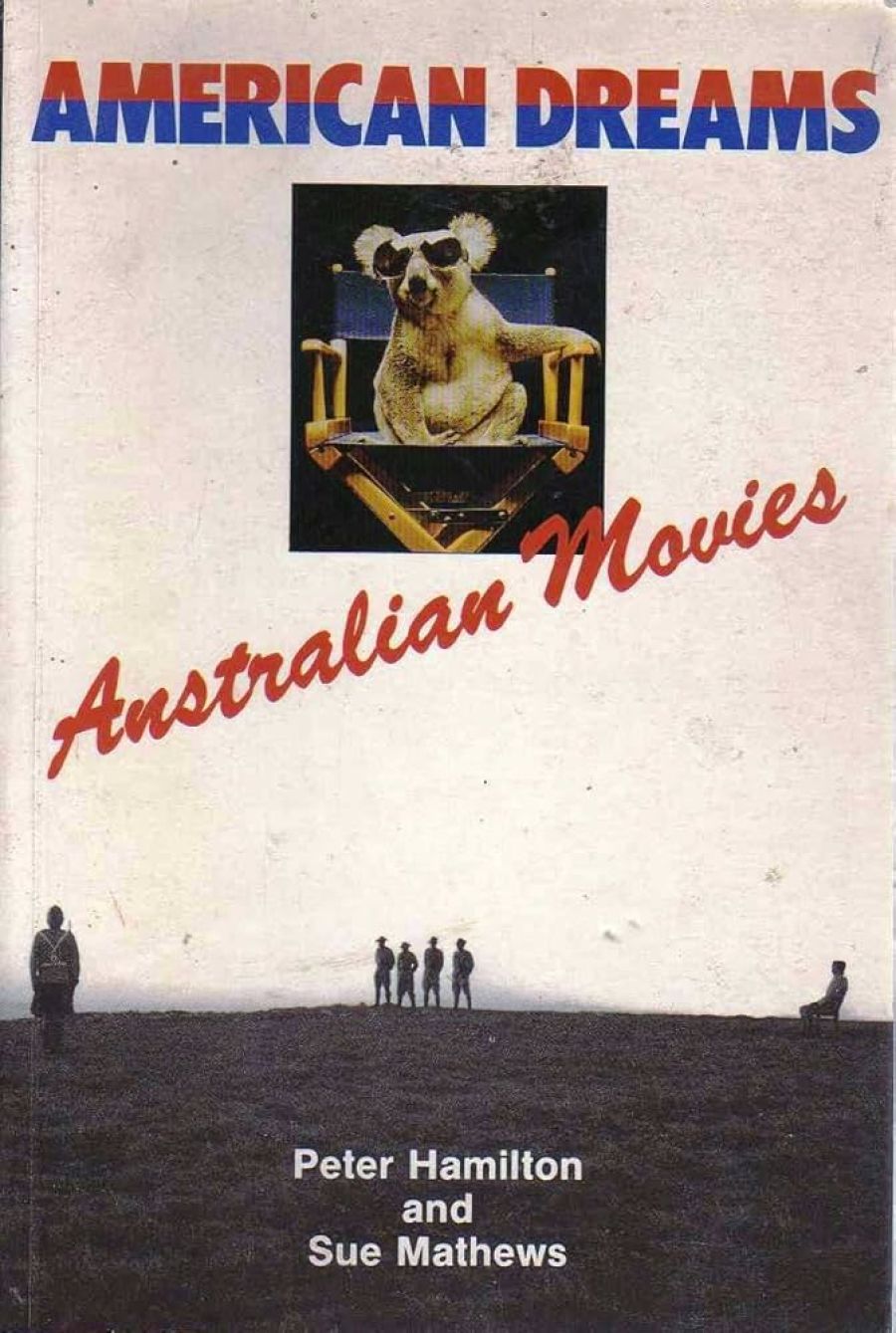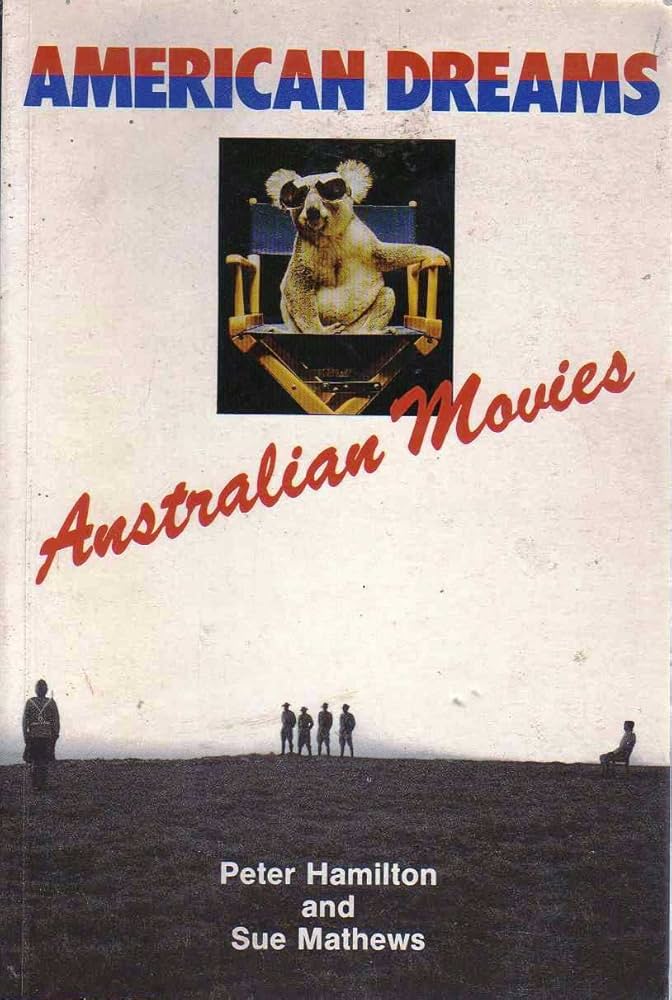
- Free Article: No
- Contents Category: Film
- Review Article: Yes
- Article Title: Selling Koalas to Newark
- Article Subtitle: Dated euphoria, irresistible hyperbole, and a sad fact
- Online Only: No
- Custom Highlight Text:
The sad fact about this worthy collection of interviews is that it has already dated, and it was dated on the day it was published. A bright, interesting, and useful journalistic account of the marketing of Australian movies to the Americans, it is redolent with the euphoria which followed the surprising arthouse success of Breaker Morant in the USA in 1981. Most of the interviews were recorded in 1982-3, and the book’s authorial conclusions are essentially those which seemed appropriate in 1983. What may have been quite a subtle interest in Australian film then has since been swamped by far more obvious and unequivocal successes – the Mad Max trilogy of genre movies and, of course, Crocodile Dundee. So, there is a degree of hesitation in this book – the careful positing of possibilities, the modest isolation of a trend – that would not be there if it were to be assembled now. It is a book of its moment, and that moment was four years ago. The authors, or their publishers, implicitly admit this by adding a 1986 afterword, but it only underlines the fact that this book has taken two years longer than it should have taken to reach our bookshelves.
- Book 1 Title: American Dreams
- Book 1 Subtitle: Australian Movies
- Book 1 Biblio: Currency Press, 240 pp, $16.95 pb
- Book 1 Cover Small (400 x 600):

- Book 1 Cover (800 x 1200):

The book’s main question is, simply, why do Americans like our films? I find that question’ less interesting than some the book sees as side issues (I tend to ask why didn’t Americans like our films ten years ago!). For me, the real issue in American Dreams: Australian Movies is the marketing of Australian films overseas, and there are at least two specific aspects the interviews raise.
The first is graphically demonstrated here: that is, the comprehensiveness of the gatekeeping role American distributors still play in world cinema. The outline of distribution possibilities in this, the world’s richest film market, reveals how slim are the chances of any foreign film penetrating the American hegemony. Depressingly, there is little the book can suggest which will change this – and it affects larger industries than ours.
The second issue is more tendentious, because more indeterminate. It is the vexed question of whether or not Australian movies ought to be more ‘international’ – whether they ought to, as it were, ‘speak’ without an accent in order to be understood in Peoria. The book canvasses this issue well without hiding its fear of the wrong move killing off a fragile industry. We have complaints from Home Box Office about Australian accents, and the warnings – all too familiar – of the dangers of a parochial product from producers like Tony Ginnane. Posed against these, however, is the most memorable view on the issue which comes from the redoubtable Bob Ellis:
Americans are like lantana, they’re everywhere. They look good for a while, but they choke everything that tries to grow under them. They are a cancer. They are a wicked, awful people. They must not be encouraged or praised for anything other than that for which praise is due. They write very good popular songs. I like their dancing. I’m fond of their cartoons. I think at any higher level of art, they are pompous, fatuous, inflated failures. They must not be imitated, and their advice must not be sought. Their advice is not appropriate. We have enough good instincts of our own.
Cultural chauvinism of the first order, its hyperbole is still irresistible. Yet, on the evidence of American Dreams: Australian Movies, Australian film producers do need help; not in ‘internationalising’ the content but in selling and promoting Australian films to the American industry and its audiences. There is clearly a need for people such as Renee Furst, the American publicist whose interest in Australian films goes back to Between Wars.
There is also a need for Australians to be exposed to the iconoclastic criticism of Pauline Kael, who compares the ‘made in Australia’ tag to the ‘Good Housekeeping’ seal of approval: ‘ ... it is safe to take a young girl to an Australian film ... it guarantees a certain date appeal because a film that is terribly exciting can be upsetting to people out on a date’. Such remarks are less apt now than they were in 1982 when she uttered them, but they offer distinctly foreign and unsympathetic perspectives on Australian cinema – and that can be useful.
Too late it is, but much of the material in American Dreams: Australian Movies manages to have, at least, this tang to it – stimulating, interesting, and curiously ‘interconnected with things we know already.


Comments powered by CComment